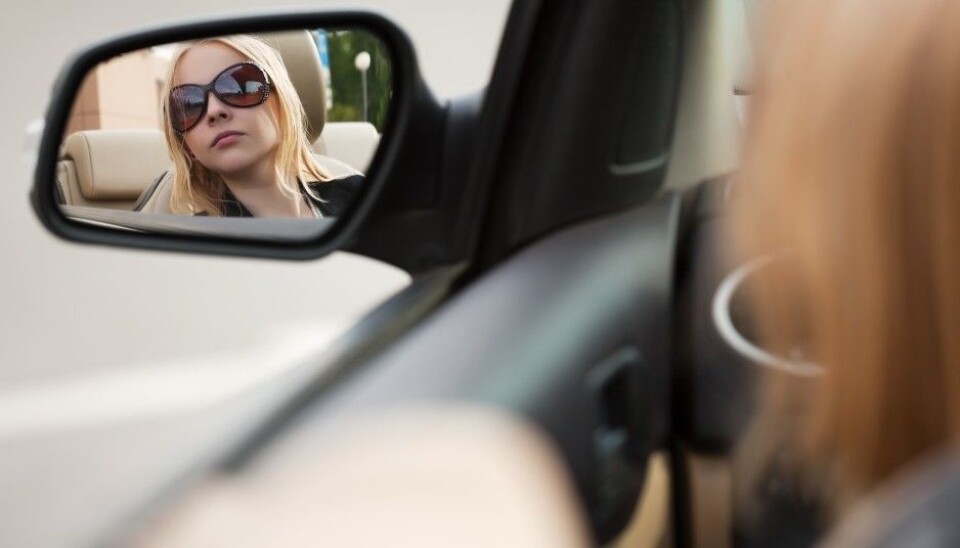
Safe in traffic despite impaired hearing
People with reduced hearing are not any worse at driving cars than others.
Good hearing may seem like a prerequisite for being a safe driver, but new research from Sweden shows this is not necessarily true.
“The differences I’ve seen in my research clearly show that drivers with impaired hearing are generally more cautious than drivers with normal hearing,” says Birgitta Thorslund, who was recently awarded her PhD on the issue from Linköping University.
Her results show that people who are hard of hearing do not represent a bigger risk in traffic than drivers with normal hearing.
Little studied
Thorslund says that little research has been conducted on the subject of hearing and traffic, and most of what has been done has provided ambiguous conclusions. Some of the studies show a higher risk connected with impaired hearing while others do not.

“We listen in 360 degrees and see in 180 degrees. Hearing is important for the perception of time and space. It’s rather odd that so little research has been conducted on the impact of hearing on traffic safety,” says Thorslund.
Many would thus assume that drivers with poor hearing pose a risk to themselves and others in traffic. But hearing loss does not automatically equate with poor driving skills. Perhaps just the opposite.
In Norway anybody with impaired hearing, from lesser impairments to total deafness, can be eligible for driving licenses under the same rules as everyone else.
But a hearing impairment makes extra demands on the person behind the wheel. Driving a vehicle requires using our senses to the fullest.
Careful and aware
Thorslund has compared two groups of drivers through three separate studies – a questionnaire, a test using a driving simulator and observations made out in real traffic. One group had normal hearing, the other suffered hearing loss.
The studies showed that people with impaired hearing are more cautious and aware of what’s going on when they drive than drivers with unimpaired hearing. They often drive more slowly in complicated situations than people with full hearing capabilities.
Thorslund also found that reduced hearing forces drivers to use their eyes more actively. They paid more attention to the surroundings and were better at using both side mirrors and the centre rear-view mirror.
Young and old
Hearing loss in one or both ears can be temporary or permanent and can occur quickly or gradually over the years. It can be caused by diseases such as inner ear infections and Ménièrs Disease – involving sporadic bouts of tinnitus and intense dizziness.
Problems can often increase with age in a condition called presbycusis. This is caused by the cumulative effect of noise and genetic predisposition.
Previous research has shown that between 20 and 30 percent of motorists over the age of 70 are hard of hearing.
But young people can also be afflicted. In Norway, with its population of 5 million, some 600,000 people have hearing loss. This was already true before people started listening to loud music on iPods and MP3 players.
Millions now risk hearing loss. Lots of studies show that our portable music players can cause young people to lose their hearing. Cases of hearing loss among young people have risen considerably since the 1990s, according to an American study.
Stronger demands required
Thorslund was surprised to find significant differences in all three studies between drivers with normal hearing and ones whose hearing was impaired.
“We didn’t initially expect to find differences. But our results from the three studies are consistent and all point toward more careful behaviour among those with impaired hearing,” she explains.
As a result, Thorslund's doctoral dissertation concludes that there is no need to tighten requirements on driving licenses with regard to the mounting numbers of elderly drivers in Sweden and Europe.
“We now have more knowledge about this group and have seen that they compensate for their hearing loss.”
No changes in Norway either
Ole Bjørn Herland is a project leader working on health criteria for driving licenses at the Norwegian Directorate of Health.
A hearing is underway in Norway about changes in driver’s licenses but no additional demands are in the cards for Norwegian drivers with impaired hearing.
“We have no changes regarding hearing because we haven’t found any increase in traffic safety risks involved with it,” says Herland.
“Hearing requirements apply only to those with Group 3 driver’s licenses, which covers what we call the heavier classes.”
Demands on drivers increase for larger and heavier vehicles to ensure that the driver is sufficiently healthy to drive safely.
The demands are also higher with regard to professional transport of passengers, such as bus drivers.
“Bus drivers need to communicate. It isn’t easy to be a deaf bus driver,” says Herland.
He doubts anyone will be able to prove that people who suffer hearing loss are a threat to safety on Norwegian roads. He bases this opinion on previous research.
“Meta-studies have been conducted showing how much of an effect impaired hearing has on the likelihood of traffic accidents. The studies conclude that hearing has the least importance," Herland said. "But obstructive sleep apnea, pauses in breathing during sleeping, are the main cause for the most accidents.”
This is because untreated sleep apnea causes drowsiness.
----------
Read the Norwegian version of this article at forskning.no
Translated by: Glenn Ostling
Scientific links
- The influence of hearing loss on transport safety and mobility, European Transport Research Review, September 2013, 10.1007/s12544-012-0087-4. (Abstract)
- Change in Prevalence of Hearing Loss in US Adolescents, The Journal of the American Medical Association, August 2010, doi:10.1001/jama.2010.1124. (Abstract)

































